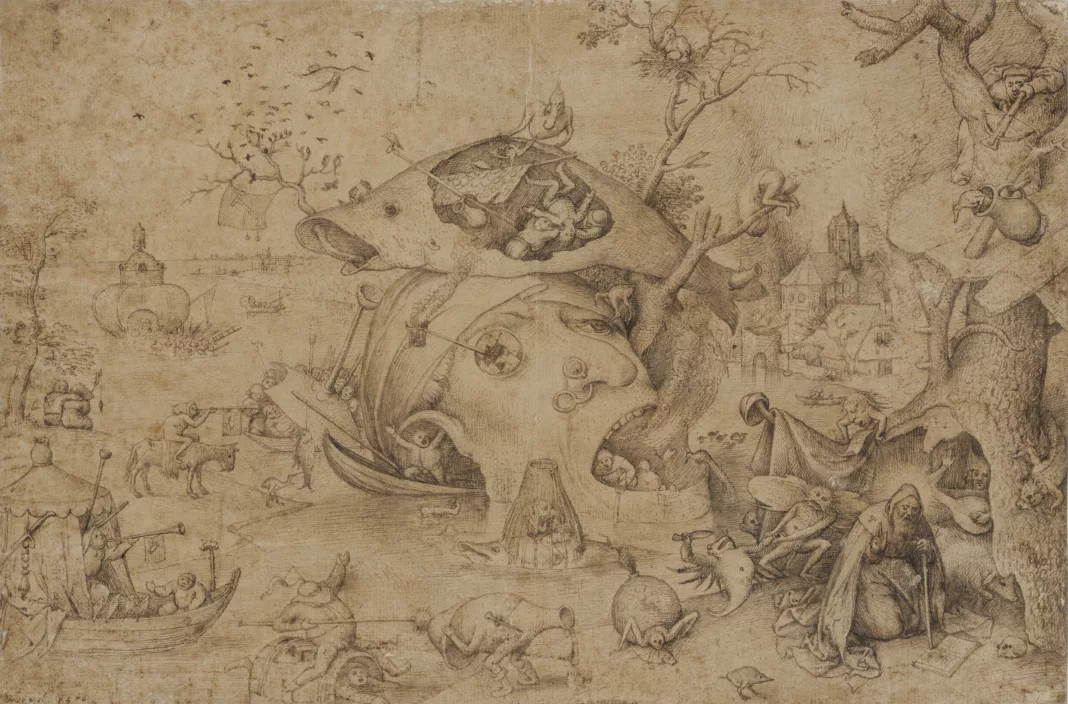As students, it is often easy to forget about the rich cultural scene at Oxford, especially given our hectic term time schedules. Therefore, it was a pleasure to return to Oxford during the vacation to visit the Ashmolean’s new exhibition, which showcases some of the best drawings of the great Flemish artists of the 16th and 17th centuries.
Upon entering the first room, a dimly lit space which takes your eyes some seconds to adjust to, we are greeted by a preview of what is to come. The exhibition takes us through the different functions of drawings, from mere sketches used to train and build skills as an artist to independent drawings being pieces of art in their own right. Much of the art on display was created around the city which the curators call the ‘centre of the known universe’ (or at least the cultural universe): Antwerp.
Moving into the second room, we learn more about how drawing was used by these artists to hone their craft, many taking tours to Italy. The highlight of this room is comfortably the Belvedere torso, of which there is a cast in the exhibition along with a sketch drawn by Rubens. The real statue is on display in the Vatican, but from the drawing alone you gain a sense of the intricacies of it and the talent needed to recreate such a beautiful sculpture on paper. The precious nature of these delicate artworks is also evident in the motion sensors that have been installed for the lighting in some of the galleries; we are allowed to capture a ten-second glance at the works before they are seized away again.
Following this, we move into a room that pays homage to the role of drawing as a key stage in the design process. One of the unique things about this room is the number of double-sided artworks. Again, this creates a sense of intimacy: a number of these double-sided works bear little relation to each other, suggesting they were simply playful ideas, possibly never even meant to see the light of day. This does not detract from their quality. There is an energy and creativity in some of these drawings that you very rarely see in a finished piece.
The final purpose of drawing explored is that of drawings as artworks in their own right. One of the interesting concepts explored in this room is that of friendship books, in which artists would draw signature-like pieces for each other, and which acted like an artist’s autograph book. Beyond that, in this room, we see that there is more to drawing than simply being a stepping stone to larger works. Taking a close look at the drawings around the room, we see a truly fascinating level of detail in pieces that, from a distance, can look rather simplistic.
One of the things that struck me most about this exhibition was its stark contrast to the last exhibition held in the same space at the Ashmolean. The previous instalment, which focused on the Victorian Colour Revolution, featured room after room of vibrant colours and lights. This exhibition is not that. However, it has an equally hard-hitting effect due to its intimacy. The nature of the pieces existing as part of the artists’ learning process acts as a reminder of their talents, and the fact that artwork does not always have to be filled with colour to be interesting.
All in all, Bruegel to Rubens: Great Flemish Drawings is an eye-opening look into many of the different processes that artists go through both in their training and production of great masterpieces. Furthermore, it is a very thoughtfully assembled exhibition, perhaps unsurprising given the great passion for the subject held by the curators, and the incredibly close partnership established between the Ashmolean and the Museum Plantin-Moretus in Antwerp for its purpose. Great Flemish Drawings is a must-see for anyone who is an artist looking to learn from the greats of the past, but also an incredible learning experience for anyone with any level of interest in art.
Bruegel to Rubens: Great Flemish Drawings runs from 23rd March to 23rd June 2024. Admission is free for University of Oxford students.


